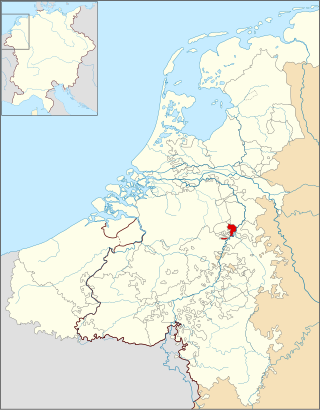Top Qs
Timeline
Chat
Perspective
County of Horne
Historic county of the Holy Roman Empire From Wikipedia, the free encyclopedia
Remove ads
Horne (also Horn, Hoorn or Hoorne) is a small historic county of the Holy Roman Empire in the present day Netherlands and Belgium. It takes its name from the village Horn, west of Roermond. The residence of the counts of Horne was moved from Horn to Weert in the 15th century.



After the execution in 1568 of Philip de Montmorency who died without male heirs, the Prince-Bishop of Liège, as suzerain of Horne, was declared the direct lord and new count. The bishops ruled the county in personal union. Horne maintained its own laws and customs as well as its financial autonomy. The county included the communes of Neer, Nunhem, Haelen, Buggenum, Roggel, Heythuysen, Horne, Beegden, Geystingen and Ophoven.[1]
It was suppressed in 1795, when it was occupied by the French, and it became part of the French département Meuse-Inférieure.
Remove ads
Rulers of Horne
Lords of Horne
- Engelbert de Hurne,
- Engelbert de Hurnen,
- Henry van Horn, † 1196
- William,
- Engelbert,
- Gerhard van Horn
- William I., † 1264/65,
- Engelbert van Horn, 1212/64
- William II., † 1300/1301,
- William III., † 1301,
- Gerhard I., † 1330,
- Willem IV of Horne (Lord 1330-1343)
- Gerard II of Horne (Lord 1343-1345)
- Willem V of Horne (Lord 1345-1357)
- Dirk Loef of Horne (Lord 1357-1368)
- Willem VI of Horne (Lord 1368-1405) † 1417,
- William VII., † 1433,
Counts of Horne
- Jacob I., † 1488,
- Jacob II., † 1530,
- Jacob III., X 1531,
- John, † 1540
- Philippe de Montmorency
- The prince-bishops of Liège, 1568-1795
Remove ads
References
Sources
Wikiwand - on
Seamless Wikipedia browsing. On steroids.
Remove ads


